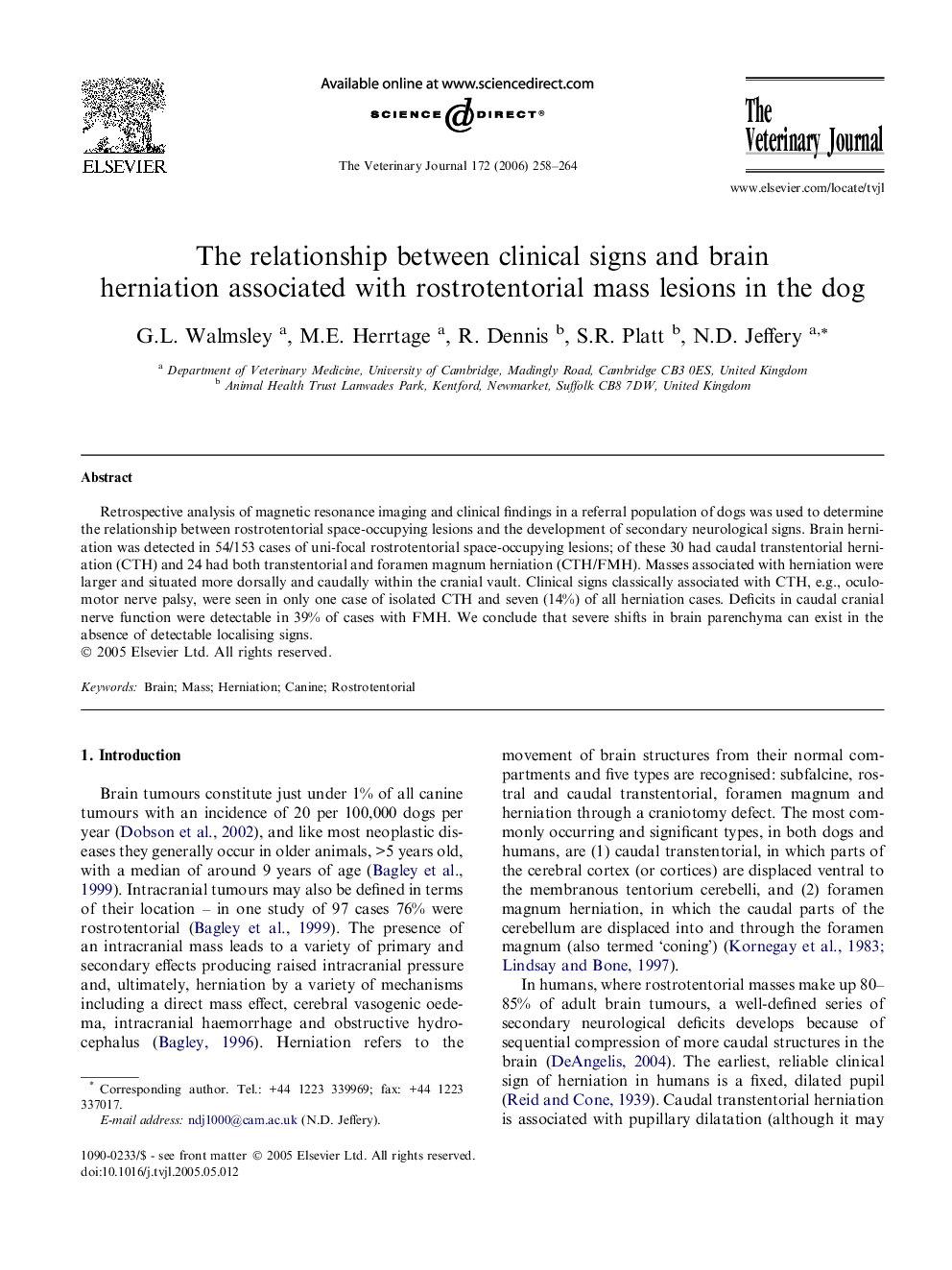| Article ID | Journal | Published Year | Pages | File Type |
|---|---|---|---|---|
| 2465901 | The Veterinary Journal | 2006 | 7 Pages |
Retrospective analysis of magnetic resonance imaging and clinical findings in a referral population of dogs was used to determine the relationship between rostrotentorial space-occupying lesions and the development of secondary neurological signs. Brain herniation was detected in 54/153 cases of uni-focal rostrotentorial space-occupying lesions; of these 30 had caudal transtentorial herniation (CTH) and 24 had both transtentorial and foramen magnum herniation (CTH/FMH). Masses associated with herniation were larger and situated more dorsally and caudally within the cranial vault. Clinical signs classically associated with CTH, e.g., oculomotor nerve palsy, were seen in only one case of isolated CTH and seven (14%) of all herniation cases. Deficits in caudal cranial nerve function were detectable in 39% of cases with FMH. We conclude that severe shifts in brain parenchyma can exist in the absence of detectable localising signs.
